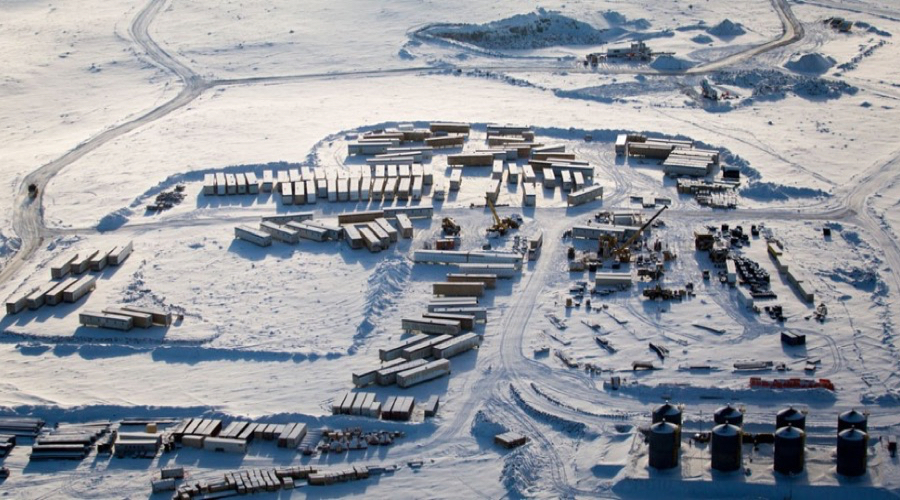
Half a century ago, the idea for a coast-to-coast infrastructure that links the Canadian far north with the rest of the country was first proposed. Today, Canadian engineers still see great value in this project, arguing that it would boost access to resources.
Seeing this “northern corridor” become reality would result in a 4,349-mile-long, three-mile-wide passage stretching from the Northwest Territories down through to southern parts of the nation, according to the Engineering News-Record (ENR). This space would be used for rail tracks, pipelines, utility lines, and roads that provide access to mines which are currently difficult to reach, such as Gahcho Kue, a diamond mine opened a year ago by DeBeers Canada. Considered the world’s largest new diamond mine in 13 years, the site is located 280 kilometers north of Yellowknife and exclusively fly-in, fly-out because there is no road access.

Graphic showing the proposed northern corridor route (Graphic courtesy of the Calgary School of Public Policy)
Building this infrastructure corridor would not only improve accessibility to resources, but include a multitude of benefits such as linking the populated southern regions of the nation to the smaller, more isolated Northern communities. According to the ENR, John Gamble, president of the Association of Consulting Engineering Companies (ACEC-Canada), says that overall this is preferable and less expensive than the ad hoc approach currently driven by individual projects. He notes that the building process would require negotiations with First Nations people, as well as federal and local government approvals.
While proposal for this project is not new to the Canadian Parliament, members of ACEC-Canada hoped to expedite political action by presenting a session about the national corridor during their 2017 national leadership conference, which took place Oct. 22-24 and was attended by government officials such as Minister of Natural Resources James Carr.
Some encouraging headway has already been made with the recent release of a senate report by the Committee on Banking, Trade and Commerce which endorsed the infrastructure, arguing that this initiative would “give rise to significant economic opportunities for Canada.”
The report calculated infrastructure costs to land at around $80 billion dollars, stating that this project will “likely require various financing methods [that] involve both public and private sources.” It recommends that the federal government provide a $5 million dollar funding sum to the University of Calgary School of Public Policy for further planning research.
For more information, check out this Engineering News-Record article.
5 Comments
LAMB
ANOTHER WAY TO SPEND OUR tax dollars, $80 billion OF THEM!!! Sounds good, right? Is it all to impress the PUBLIC so they vote TRUDEAU back in???
And to kick it off, $5 Million ?? Hardly get started for that – and given to a “School of Public Policy” ???
It will take a LOT of Engineering from the get-go and those studies should be done first to generate COST ESTIMATES – and NOT by a School of Public Policy.
Altaf
Instead of North to South, they should plan east to west. It will connect the Tar sands to eastern domestic refineries and western ports and on to Japan / Korea / China. Supplying their own refineries with local crude will reduce import requirements, and exporting crude to far east will get net cash. Economy will be trade surplus and budget surplus.
But reality is whether north to south or east to west, there will be one person with half baked brain per kilometer to protest and stop growth.
Just imagine them stopping their own crude reaching eastern refineries while they are OK if the same refineries import from West Africa.
Grant Slezak
it would solve so many problems, unfortunately governments like the current liberal government will screw this up for the Canadian people as well.
miner49er
You might be surprised as to what this government can do. It costs money to make money, always did. Takes time and takes money. just like a mine, they don’t get into production over night. Lets hear what you have to say as why this government will screw this up. Let us hear it.
Rolf N Pedersen
Northern BC coast terminus should be Prince Rupert.